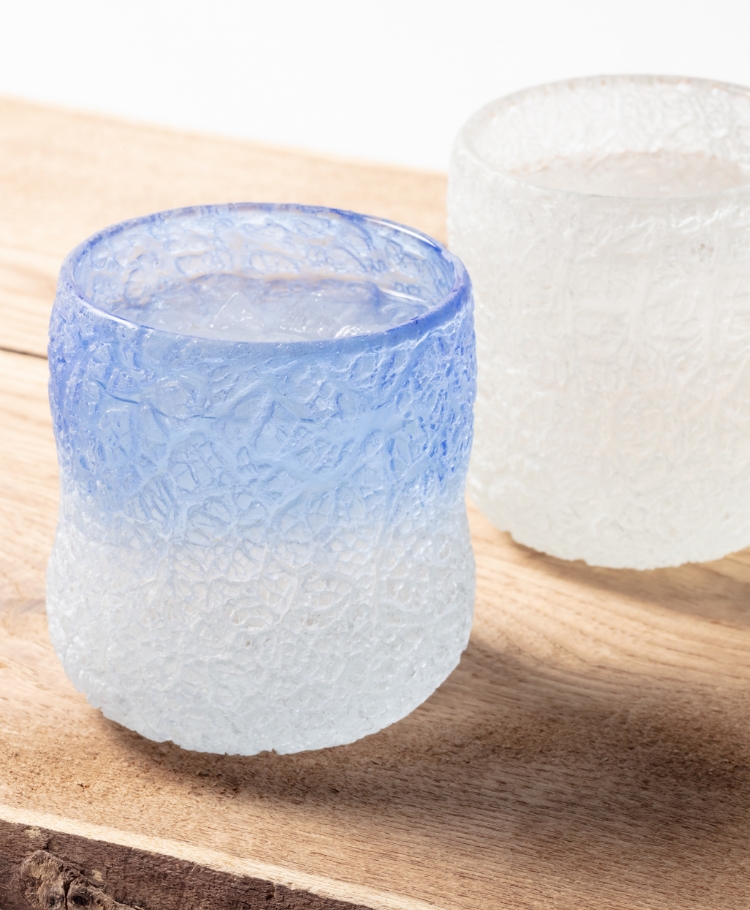If you drive for 30 minutes from Memanbetsu Airport, heading north along Lake Abashiri and the Abashiri River, you will reach Abashiri City, which is located on the eastern side of Hokkaido facing the Sea of Okhotsk. The mystical sight of pure white drift ice covering the sea will spread before your eyes.
"This is the original landscape of Abashiri, where I was born and raised. The lake and the river, the snow and the drift ice, are all created by changes in the water. I decided to set up a studio here after seeing how the beauty of this scenery and the beauty of the glass melting and changing its shape overlap," says gently Noboru Gunji holding an original glass product he has named Ryuhyo Glass.
We are at the Ryuhyo Glass Museum, the northernmost glass studio in Japan. Along with pursuing beauty, the studio undertakes numerous initiatives to prevent global warming, making an impact both in Japan and abroad. What drives Mr. Gunji in his endeavors? Let's hear his story.

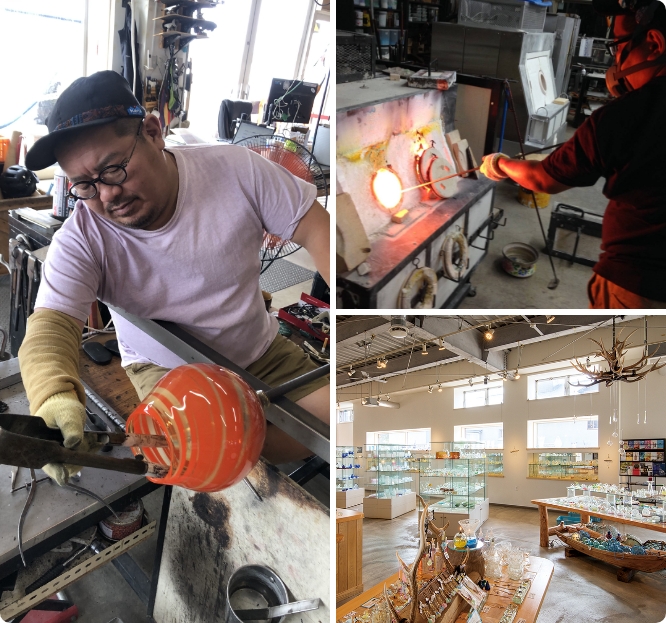
Witnessing the drastic reduction of drift ice in the Sea of Okhotsk
"When I was a child, in winter, there was this rumbling, frightening sound coming from the sea. The drift ice would collide, making a lot of noise. There used to be so much ice it formed entire walls. Now the sound has disappeared, and the quantity of ice is decreasing year by year. I keenly feel the effects of global warming," says Mr. Gunji while looking out at the sea from his studio's window. In fact, data show that the area of the Sea of Okhotsk's drift ice has decreased by 30% over the past 40 years. Why is the reduction of drift ice a problem?
"The ecosystem of the Sea of Okhotsk has an incredible mechanism. The ice traps the iron and other minerals that flow from the Amur River in north-eastern Russia and carries them over a wide area as it drifts across the sea. In spring, the phytoplankton that have absorbed the iron released from the melting drift ice proliferate explosively, and the zooplankton, such as small shrimps and mysids, gather to feed on them. This consequently attracts small fish, migratory fish, and even birds, maintaining a rich ecosystem."
Incidentally, the tastiest time of year for crabs and sea urchins in Abashiri is around April, after the drift ice has melted. This is because they have been eating plenty of food in the sea, and it makes sense once you know the reason.
"If the drift ice disappears, the iron will sink into the sea and not reach its intended destination. Considering what this would mean for the ecosystem, I strongly believe that we cannot afford to lose the drift ice. Environmental issues are never someone else's problem," says Mr. Gunji, whose maternal family comes from a line of fishermen and who has helped with octopus fishing and scallop farming since childhood. He grew up experiencing first-hand the bounty of the sea and the land. The name "Ryuhyo Glass" embodies Mr. Gunji's desire to protect drift ice as a symbol against global warming and to convey its importance to future generations.

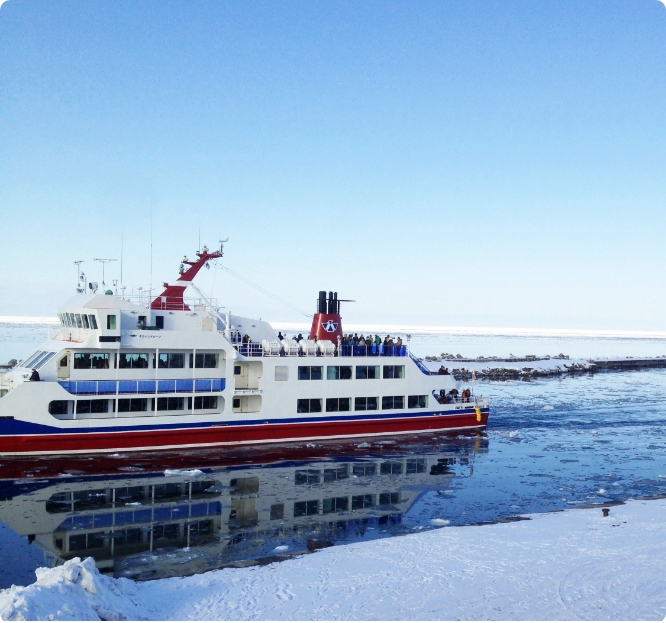
Breaking industry norms while striving to reduce CO2 emissions
Mr. Gunji began to pay attention to environmental issues at the age of 24, in his second year of studying glass crafts, inspired by an old video.
"I happened to see on the internet the 'legendary speech' given by Severn Suzuki at the 1992 UN Earth Summit. She is the same age as me, but she was only 12 years old at the time. Her appeal at the UN, 'Have you ever seriously thought about the children's future? Show it through your actions,' shocked me. I felt ashamed of what I was doing," he recalls.
Feeling uncomfortable with using large amounts of fuel and relying on imported raw materials for glassmaking, and unable to continue anymore, Mr. Gunji began to study energy-efficient kilns (melting furnaces) on his own. After graduating, he flew to Okinawa to hone his skills at a Ryukyu glass factory while continuing his research on raw materials.
"Ryukyu glass was first made after the war by reusing empty cola bottles from the US military bases. Even now, there are some private glass studios in Okinawa that use Awamori liquor bottles. Recycling bottles, however, involves a lot of work, such as cleaning, removing labels, and sorting by manufacturer. So, I continued searching for an alternative raw material."
The solution he came up with involved the use of an efficient electric melting furnace and the recycling of waste fluorescent lamps.
"Recycling fluorescent lamps requires mercury decontamination. I was surprised when I found out that the only factory in Japan with this technology was in the same Okhotsk region. It was like a miracle. I felt a strange pull."
Since establishing his studio, Mr. Gunji has been using a recycled glass material made from waste fluorescent lamps he named "Eco-Pirika." He also actively employs and incorporates waste materials and local resources, such as old batteries, scallop shells, and mineral deposits from hot springs, in coloring and designing.

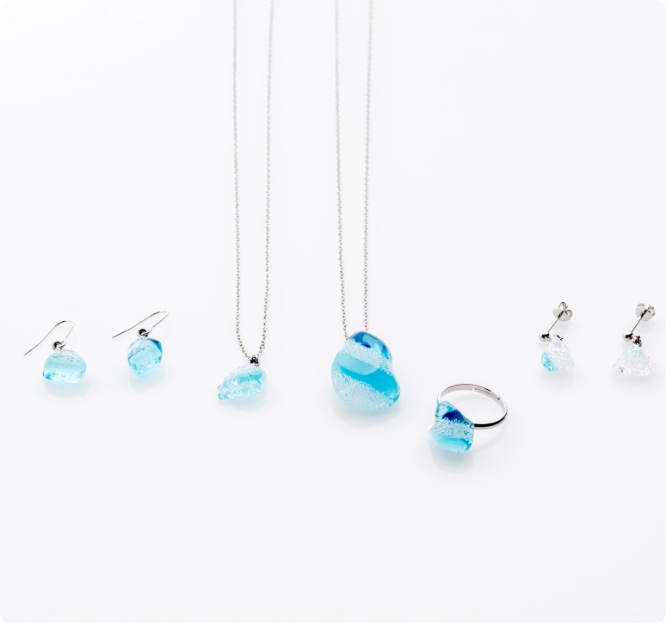
Ryuhyo Glass is attracting attention from companies engaged in SDGs and has been adopted for lighting in hotels and restaurants. The response to the products has been very positive, with a growing number of inquiries about the possibility of recycling solar panels. Meanwhile, Mr. Gunji has decided to take further environmental measures.
"In an effort to avoid the summer power demand peak, we have been stopping the glass production and shutting down the kiln for two months during summer for the past three years. Normally, summer is the busiest season for glassmaking, so my fellow glassmakers were worried for my business, but there has been no problem at all. I will continue to do whatever I think is good for the environment."

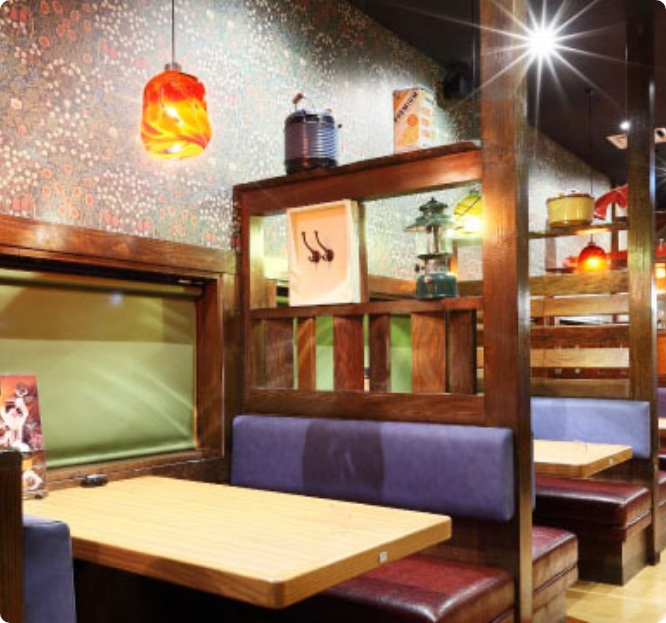
Tours that allow to experience the natural wonders of Abashiri
During the summer months, Mr. Gunji takes a break from glassmaking and engages in a different activity—being a kayak guide. As the president and guide of an organization called "Connectrip," he conducts tours that allow participants to connect with the region's primary industries, history, culture, and people. The experiences on offer vary depending on the season.
"Kayak tours are very rewarding because they allow you to feel nature with your body and to get to know the best parts of Abashiri without using electricity. Drift ice kayaking during the winter season is the most typical activity here, but summer kayaking tours are also great. You can kayak your way to a farm, where you can harvest vegetables and walk around the fields, or even go and watch the fishermen catch sea urchins."
In fact, Abashiri has longer sunshine hours and more sunny days compared to other places in Hokkaido. There is relatively low humidity during the summer months, and the temperature does not drop too much in winter. Surfing and SUP can be enjoyed throughout the year.
"Abashiri is, in my opinion, a paradise where everything is in perfect balance. It is said to have been a paradise on earth for the Okhotsk people, an ancient northern tribe who migrated south from the island of Sakhalin about 1,500 years ago. All this, thanks to its rich natural environment. When you are immersed in the nature of Abashiri, your body will be detoxified from all kinds of things, and your stress will disappear. I invite you to visit and experience this wonderful feeling for yourself."


A better future for the Earth starts with our actions
Mr. Gunji is also involved in a range of other activities. In 2022, following a heavy oil spill incident on the shores of Lake Abashiri, he collaborated with other local residents to establish a citizens' group demanding the complete removal of contaminated soil. He launched an online signature campaign and made an appeal for environmental protection.
"In order to continue to protect the natural environment, the entire community, the entire society, has to stand up and speak out. It is important that we all think about this, not just the fishermen involved," he says.
Protecting the drift ice should not be just a local issue. This is what Ryuhyo Glass seems to convey to those who hold it.
"Drift ice is a barometer of the environment for us, but I think each region has its own. If you want to protect the future of the Earth, start by acting on what you notice. Each and every one of us must do our part."

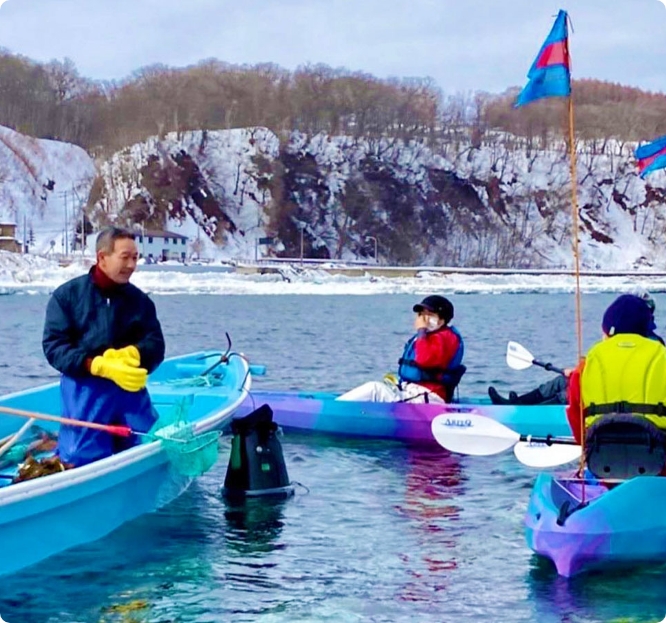

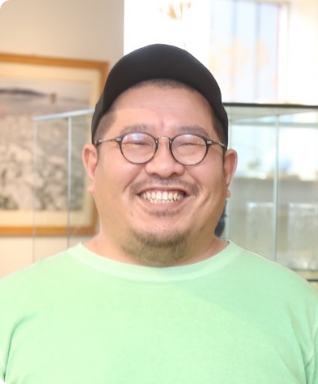
Head of the Ryuhyo Glass Museum Chairman of the Okhotsk Experiential Tourism Promotion Committee (Connectrip)
Born in Abashiri City, Hokkaido. He became interested in glass crafts during university. After attending a glassmaking school and working at the Ryukyu Glass Village, he opened the Ryuhyo Glass Museum in 2010. His initiatives focused on the prevention of global warming have been attracting attention both in Japan and abroad. In 2018, he established a committee that formed the basis of "Connectrip," which offers experience tours showcasing the local industries and nature. A kayak guide himself, he continues to promote environmental protection and the attractions of Okhotsk.


